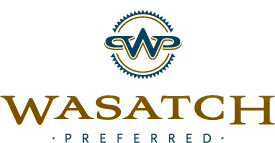Road debris is a common problem on America’s roadways. Most accidents caused by debris are sudden and unanticipated and can result in serious injury or death.
Road debris is anything that doesn’t belong on the road, including trash, stuff that may have fallen from other trucks, branches and other natural objects that fall or blow onto the road. After big storms debris can often be found littering the roads.
This hazard contributed to more than 200,000 accidents that injured more than 39,000 people and killed 500 over a three-year period, according to the AAA Foundation for Traffic Safety. The majority of these accidents occurred on interstate and state highways.
Two-thirds of all road-debris accidents are the result of objects falling off moving vehicles.
According to the foundation, 37% of all fatal road-debris accidents involved a driver suddenly swerving to try and avoid debris. Here are some of the types of personal injury crashes that can occur when debris is on a roadway:
- Single or multiple vehicle sideswipe collisions from swerving when attempting to avoid debris.
- High-impact, rear-end collisions when a vehicle suddenly brakes to avoid debris.
- Rollovers caused by hitting debris.
- Head-on crashes from swerving to avoid debris.
The most dangerous form of road debris is that which falls off another vehicle, forcing other motorists to take quick evasive action, which can cause them to swerve or forcefully apply their brakes. However, when a driver has to suddenly react to avoid an object, they also run the risk of hitting a guard rail or another vehicle.
Train drivers
It’s important that firms with driving employees include training about the dangers of road debris and how to reduce the chances of causing an accident when encountering it.
- Drivers should stay alert at all times.
- They should keep a comfortable distance between themselves and the vehicle in front of them by following the three-second rule. This will provide enough time for a driver to take evasive action, if needed.
- If the driver is behind a vehicle hauling goods of any type, they should add another second or two to the count. Even better: They should change lanes.
- If they spy a truck with an unsecured load, they should avoid driving behind it, change lanes and pass when it’s safe to do so. This way, if something falls off, the driver doesn’t have to take evasive action.
- If a driver sees debris in the distance in their lane, they should simply change lanes calmly if there is plenty of space in an adjacent lane. If there is a car behind them, it’s courteous to flash the brake lights twice to let them know you’re dodging on purpose and give them a few extra seconds to follow suit.
If there is only one lane, no shoulder or the driver is boxed in, they should not change lanes. In these cases, they should use their best judgment and try to minimize damage to the vehicle. This may include slowing down significantly and possibly trying to adjust their lane position so that their tires don’t run over the debris. This gives them the best chance to maintain control of their vehicle, although there may be some damage to the front of the vehicle and/or the undercarriage.
Liability and insurance
It’s difficult to establish liability in road-debris accidents.
It’s a bit easier if it arises from debris suddenly flying from a truck and striking another vehicle. If the load is unsecured, the driver of that vehicle could be held at fault. If the other driver doesn’t stick around, you may be able to file a claim under your uninsured motorist coverage.
However, in cases where your driver hits debris that was laying on the roadway, your insurer may determine that your driver failed to avoid the debris because they were either distracted or speeding, and deny coverage as a result.
